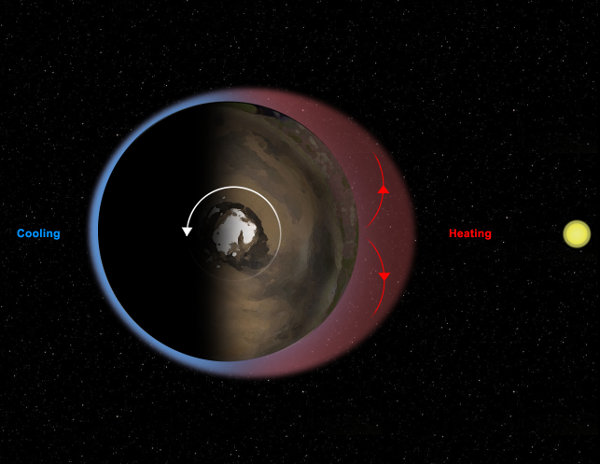
One of the many tasks of the Mars Rover Curiosity is to study the weather and the levels of radiation on Mars. In particular, it’s collecting data on winds and changes in the levels of natural radiation in Gale Crater, where it’s currently working.
Curiosity mission scientists are collecting the data gathered by the Mars Rover identifying the patterns of some winds and the variations in atmospheric pressure. The Rover Environmental Monitoring Station (REMS) instrument is used to detect humidity, pressure, temperature, wind speed and ultraviolet radiation, basically a mini-meteorological laboratory to study the changes in the Martian weather.
The Martian climate is strongly influenced by the presence of dust in the atmosphere and is present in extraordinary phenomena cush as as the dust devils, which can become really huge. In Gale Crater, however, no traces have been found of these phenomena so it’s possible that in that area the vortex whirlwinds don’t raise much dust as it happens in other parts of the red planet.
The Mars Rover Curiosity has analyzed the changes in the weather long enough to recognize daily rhythms and a seasonal increase in air pressure. The daily cycle is caused by the heating of the atmosphere caused by the Sun. Instead, the seasonal increase is caused by carbon dioxide in the form of dry ice at the south pole, which returns to the atmosphere when summer arrives in the southern hemisphere.
[ad name=”AmazonScience”]
The daily rhythms form a thermal tide whose effects are detected by the Radiation Assessment Detector (RAD) instrument, which allows to measure radiation levels. These measurements will allow the assessment the chances that hypothetical Martian life forms can survive in that environmanet but also to understand what kind of protection the astronauts that sooner or later re going to Mars will have to use.
Mars atmosphere, despite its low density, offers some radiation protection and when it warms up and expands the protection is better. For future astronauts and especially for possible future settlers it could then be safer to go out on the surface during the day.
This type of research is just at the beginning because the Mars Curiosity Rover will keep on collecting data on weather and radiations so that the humans who’ll go to Mars will really know what to expect.

